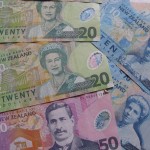 Gold gained slightly on Thursday as the FOMC said after its two-day meeting on Tuesday and Wednesday that persistently low inflation could hinder economic expansion and pledged not to taper its monetary easing program.
Gold gained slightly on Thursday as the FOMC said after its two-day meeting on Tuesday and Wednesday that persistently low inflation could hinder economic expansion and pledged not to taper its monetary easing program.
On the Comex division of the New York Mercantile Exchange, gold futures for December delivery traded at $1 317.15 per troy ounce at 8:11 GMT, up 0.32% on the day. Prices ranged between days high and low of $1 330.55 and $1 316.55 an ounce respectively. The precious metal fell 0.17% on Wednesday and has so far declined 1.2% on the week after gaining almost 3% the preceding one.
Gold swung between gains and losses on Wednesday as upbeat U.S. economic data supported the U.S. dollar, which pushed gold down. However, the precious metal regained positions later in the day as the FOMC said in its after-meeting statement that Fed will keep its Quantitative Easing program intact as it sees risks of disinflation.
“The committee recognizes that inflation persistently below its 2 percent objective could pose risks to economic performance, but it anticipates that inflation will move back toward its objective over the medium term,” the Federal Open Market Committee said.
FOMCs statement provided overall no new language since its latest meetings on the conditions for maintaining and decelerating the monetary stimulus. Bernanke and his colleagues said that further improvements of the labor market are required, with the Unemployment Rate still unchanged at 7.6% prior Julys reading on Friday. Meanwhile, inflation remained stable and below the central banks 2% target, hinting risk of disinflation.
Tom Power, a senior commodity broker at R.J. market O’Brien & Associates in Chicago, said for Bloomberg: “The gold market is stuck in the middle because there are so many cross currents. On one hand maintaining stimulus is positive, but on the other hand deflationary worries can never be good for gold.”
Gold’s price has largely been tracking shifting expectations of an earlier-than-expected deceleration of Fed’s monetary easing program. The metal is used mainly as a hedge against inflation, which accelerates when a central bank eases money supply. An exit from a program such as Quantitative Easing would deliver a heavy blow to gold’s price as its demand will crumble.
Mark Vitner, a senior economist at Wells Fargo Securities LLC in Charlotte, North Carolina, said for Bloomberg: “A September tapering announcement still seems likely. The bottom line for the Fed is the downside risks for the economy are diminishing. If price gains decelerate to the point they worry about deflation, that might give them some pause on tapering.”
Gold was pressured yesterday as upbeat U.S. data supported the dollar and spurred speculation prior to FOMCs statement that Fed might begin tapering the bond purchasing program sooner than expected.
The U.S. Advance Gross Domestic Product rose to 1.7% in the second quarter, outperforming analysts’ expectations for a decrease to 1.0% from the preceding period’s downward revised reading of 1.1%.
Data also showed that Consumer Spending grew more than anticipated as well. Preliminary Personal Consumption Expenditures rose by 1.8% in the second quarter, surpassing expectations for a drop to 1.6% from the previous period’s 2.6% increase. Consumer spending accounts for as much as 70% of U.S. economic growth.
Employment expenditures in the world’s biggest economy advanced with a moderate pace, signalling that inflation remains stable and low, despite the $85 billion per month bond purchasing program. The Employment Cost Index surpassed expectations for a 0.4% gain and stood at 0.5%, aligning to first quarter’s upward revised reading.
Automatic Data Processing Inc. reported earlier in the day that the U.S. economy created more jobs than projected by analysts. July’s ADP Employment Change indicator rose to 200 000, compared to forecasts for a decline to 180 000 from June’s upward revised reading of 198 000 jobs.
Market players will be keeping a close eye on the remaining U.S. data this week to gauge demand prospects and strength of the dollar. The reported ADP data is considered as less reliable and investors are eyeing Thursday’s Initial Jobless Claims and Friday’s Unemployment Rate and the Non-Farm Payrolls figures. On Thursday, the Labor Department will likely report that 2 000 more people have filed for initial unemployment payments in the week ending July 27, up from the preceding period’s 343 000. On Friday, the government agency is expected to report that the Unemployment Rate has fallen to 7.5% in July, down from June’s 7.6%. Meanwhile, Non-Farm Payrolls probably declined by 10 000 to 185 000.
Apart from the employment data throughout the week, Personal Income, Personal Spending, Average Hourly Earnings and Factory Orders will be released on Friday.
Investors are also awaiting central bank news from Europe to provide further information for golds demand as a hedge against inflation. Bank of Englands interest rate and monetary stimulus decisions are due at 11:00 GMT. Meanwhile, later today the European Central Bank will announce its Interest Rate Decision and Mario Draghi will hold his speech regarding ECBs policy.





